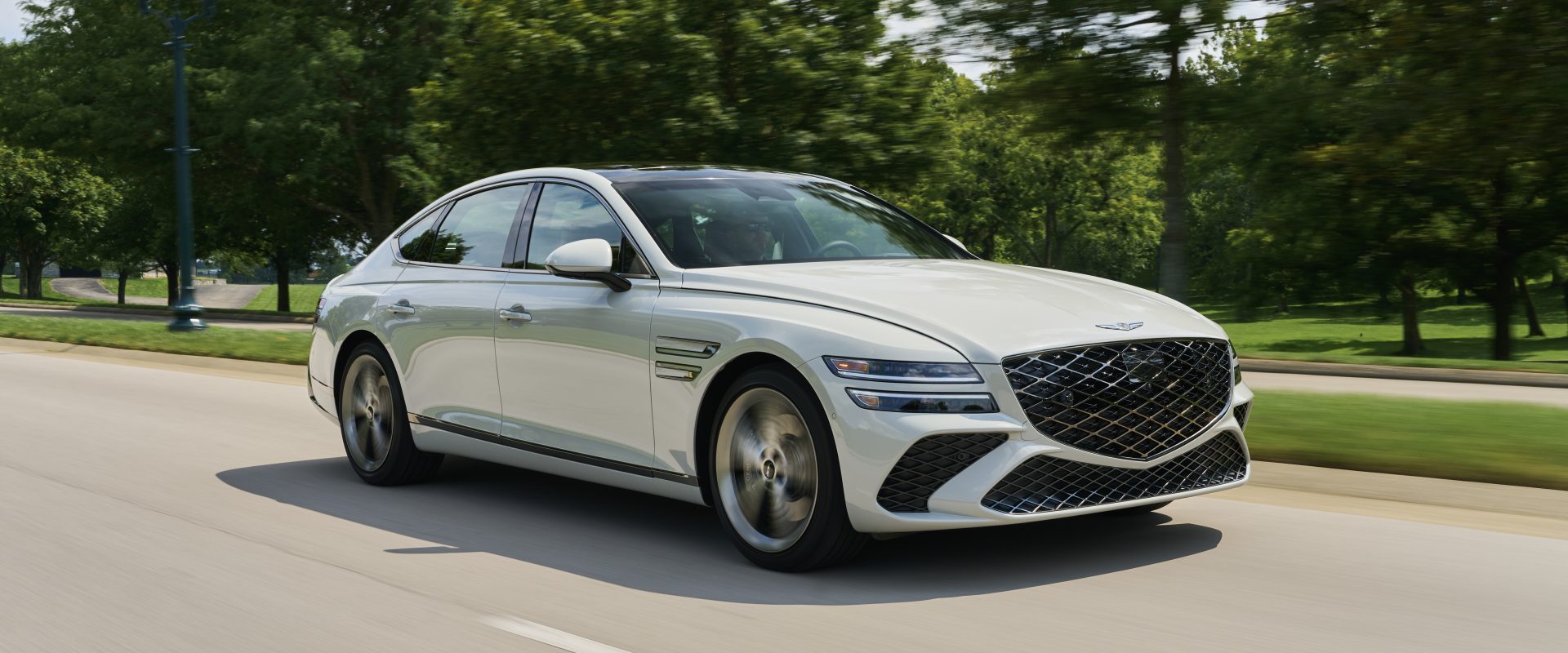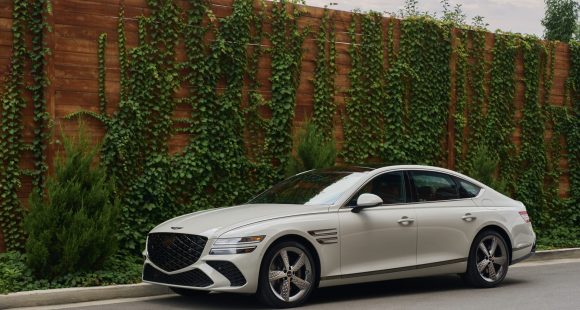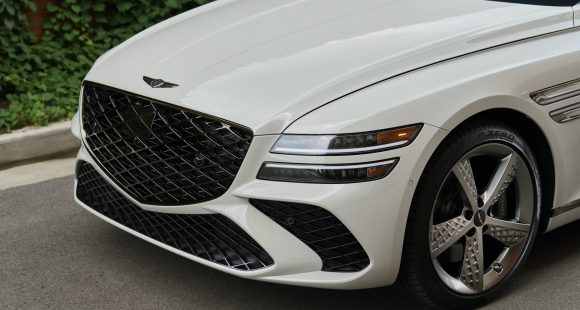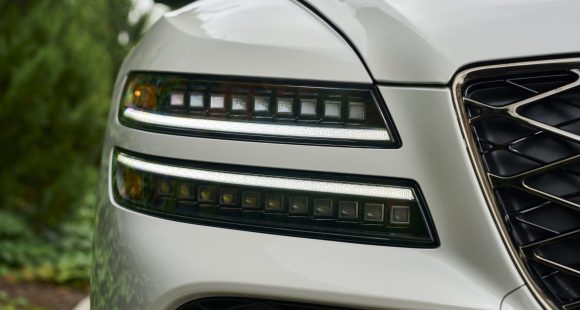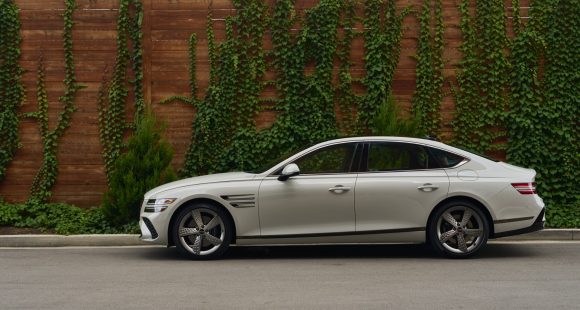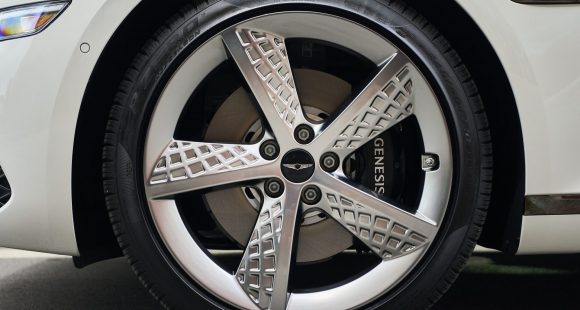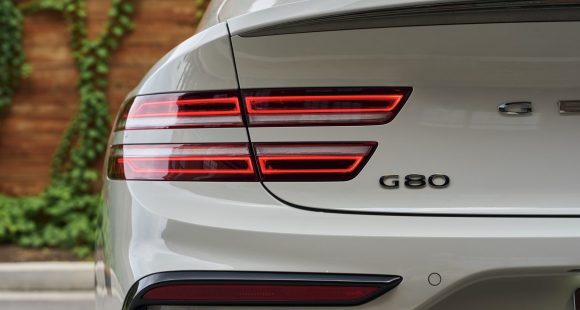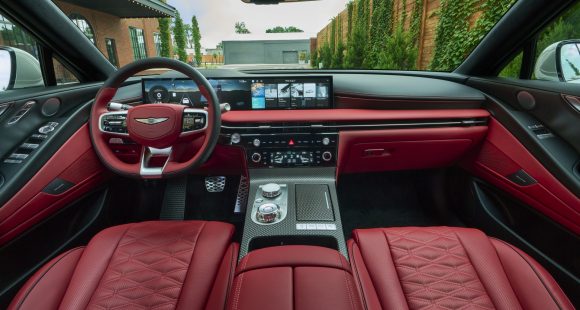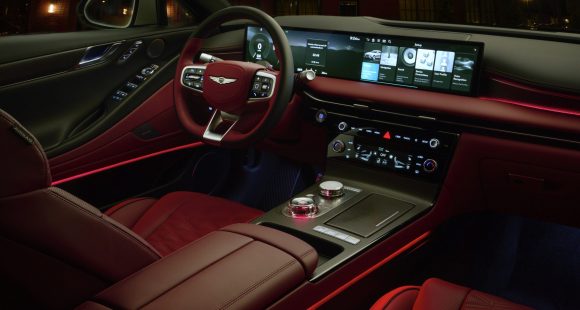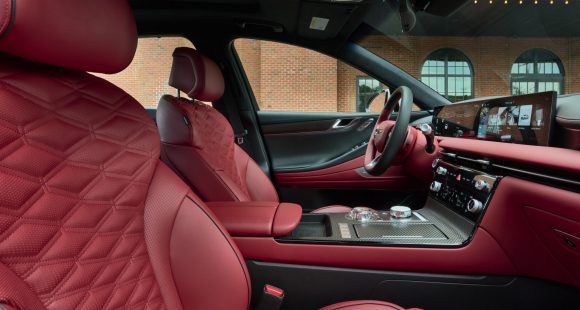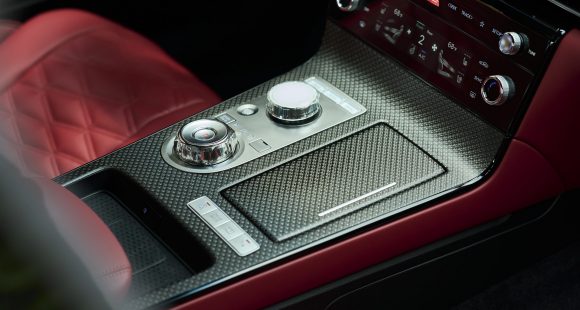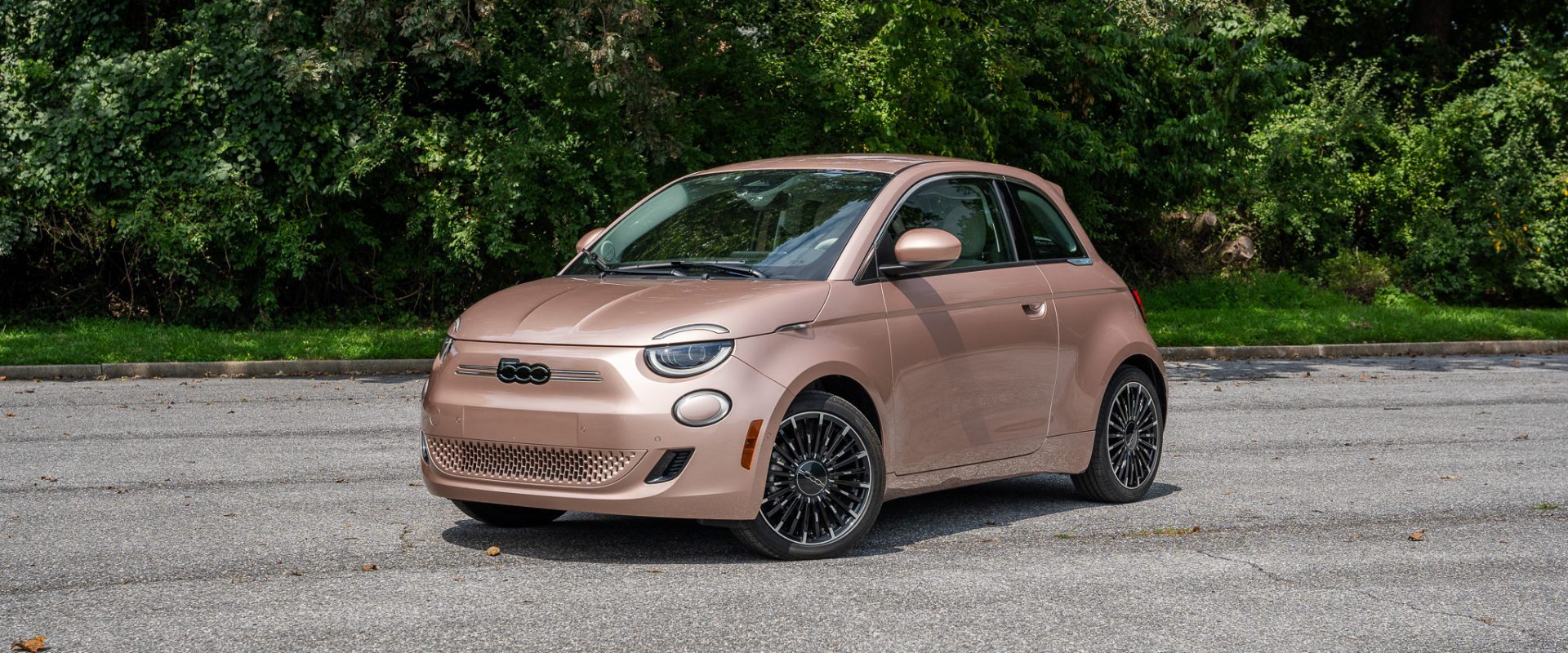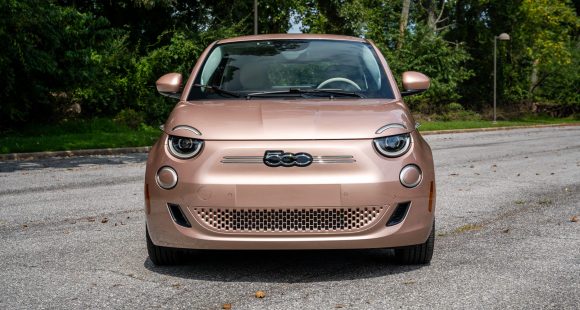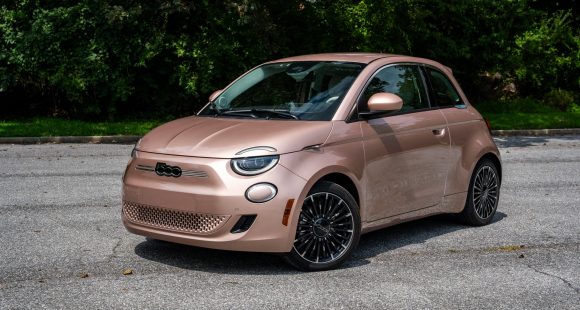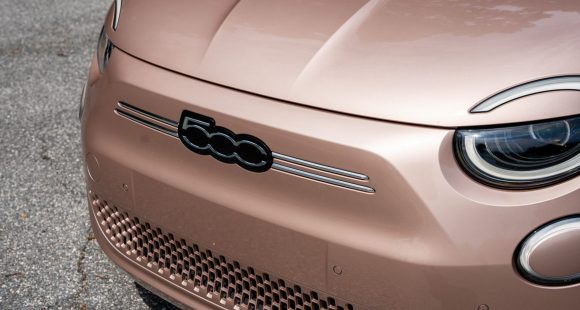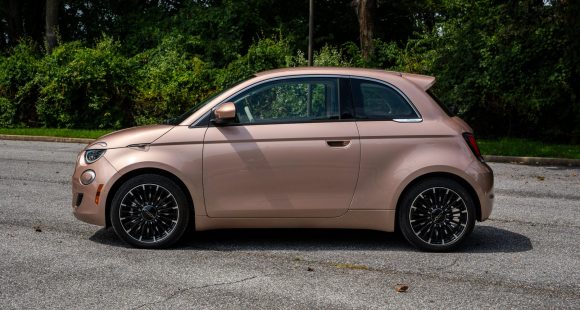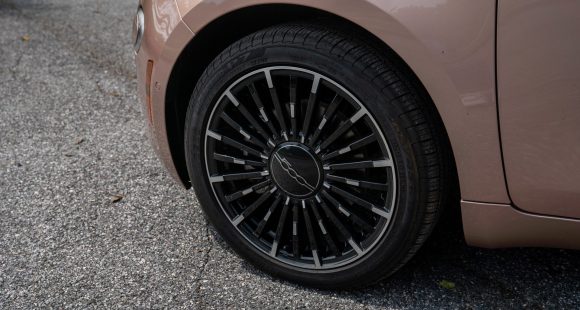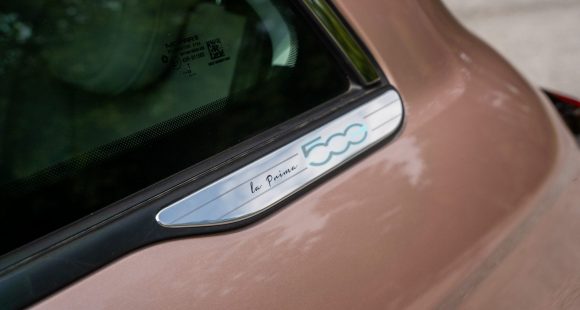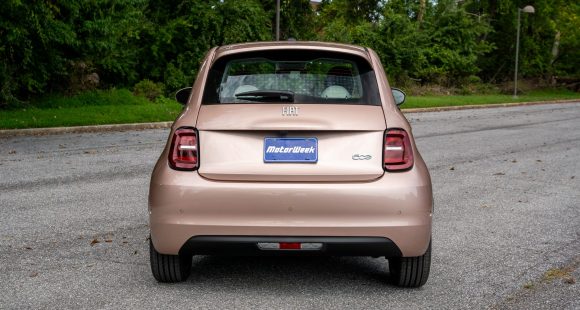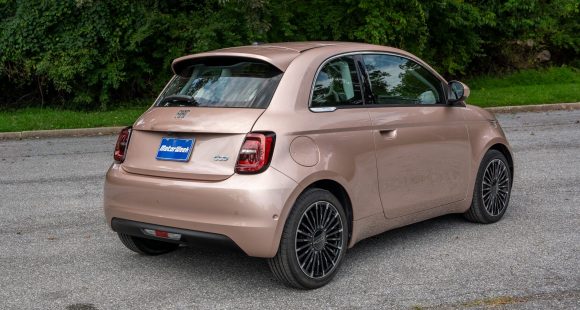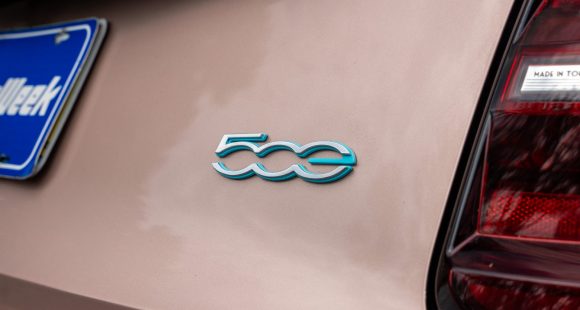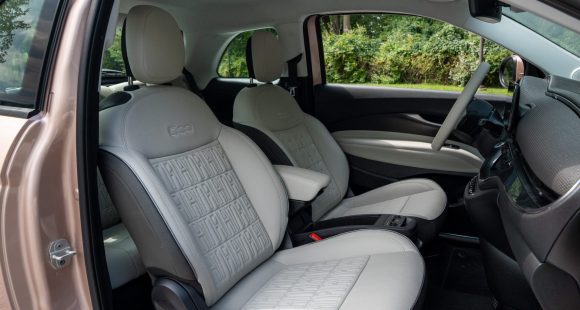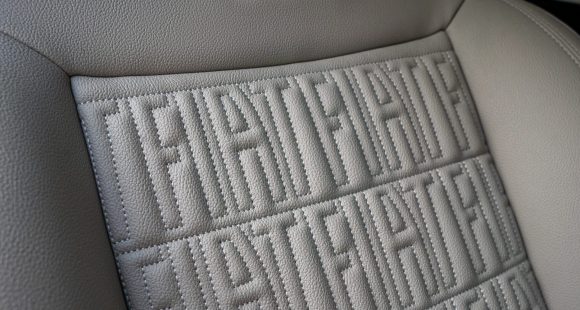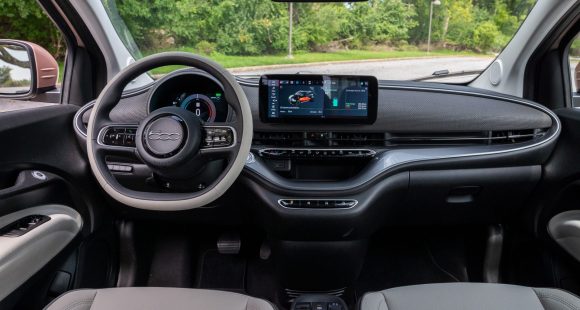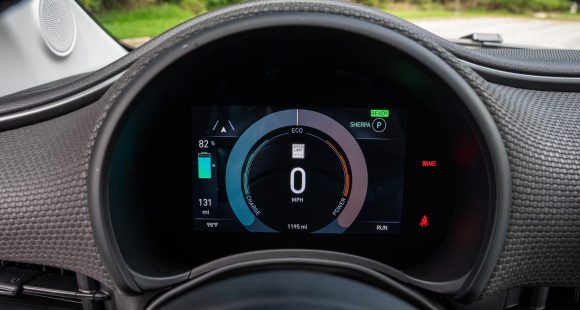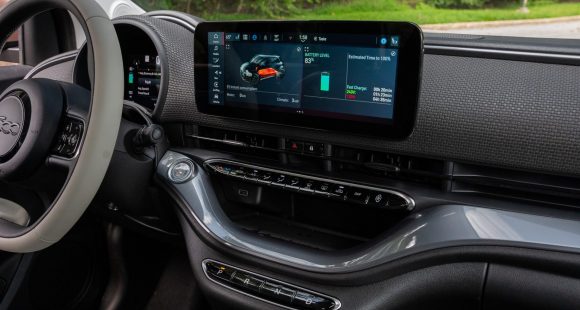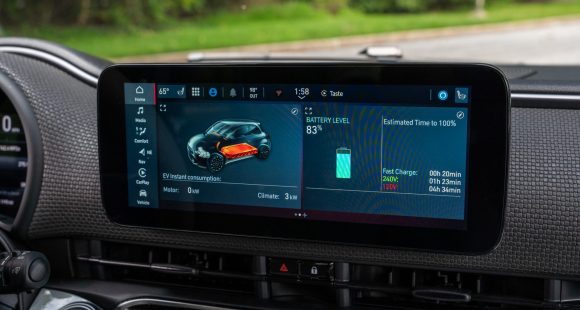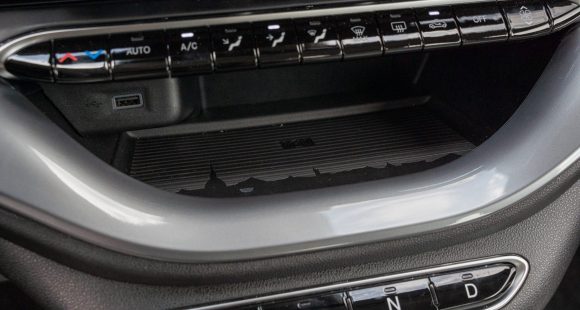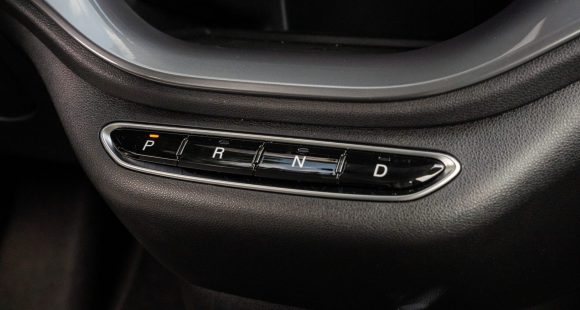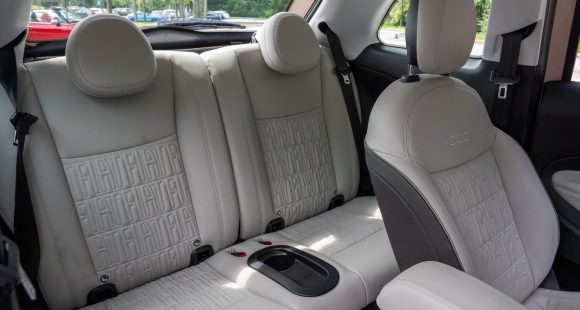2017 Fiat 124 Spider
While Fiat is well known worldwide for their diminutive 500, or cinquecento; it’s the 124 Coupe and Spider that first introduced most Americans to the brand back in the late 60s. And after using the 500 to re-introduce themselves here in the states, Fiat has now launched an all-new 124 Spider for us to enjoy. But this is no throw-back two seat Italian sports car!
Up to now, the cars making up Fiat’s U.S. return have indeed been diminutive, mostly economy-minded affairs. But, the overall effect of Fiat’s return has been anything but small, merging with Chrysler in 2014 to create Fiat Chrysler Automobiles. And now things get a whole lot more exciting with the 2017 Fiat 124 Spider.
Now this is where we tell you that this 124 is actually built on the same chassis as the Mazda MX-5, and further, comes out of the same Japanese plant. But this is far from a story about international badge engineering. They really do look a lot different, at least outside, especially when parked next to each other. Where the MX-5 has gotten meaner looking over the years, the 124 looks classy; with a nicely modern update of 60’s Italian-style.
The 124 Spider certainly has a sporty character; but instead of begging you to seek apexes, it yearns for mountain passes, and a more relaxed Grand Touring pace. It’s less edgy and more compliant; a kinder, gentler, and softer MX-5 if you will. Very reminiscent of the first Miata.
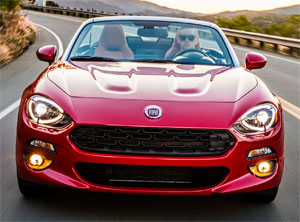 The engine is another clear departure. In place of the Miata’s naturally-aspirated 2.0-liter is the same 1.4-liter MultiAir turbo-4 found in other current Fiats, including the raucous 500 Abarth. Here it spins up 160–horsepower and 184 lb-ft. of torque.
The engine is another clear departure. In place of the Miata’s naturally-aspirated 2.0-liter is the same 1.4-liter MultiAir turbo-4 found in other current Fiats, including the raucous 500 Abarth. Here it spins up 160–horsepower and 184 lb-ft. of torque.
It winds up quickly. But, despite more horsepower and torque, an increase in size and weight makes the 124 a tad less spirited off the line than the MX-5, though the exhaust note adds to its much enjoyed Italian flair.
And it surely fits in with the character of the original 124 Spider, which was an everyman’s take on a Ferrari.
We hit 60 in 7.6–seconds, and cleared the ¼-mile in 15.8-seconds at 91 miles-per-hour. Refreshing!
Our tester came with the optional 6–speed automatic in place of the standard 6-speed manual. It worked well enough, with smooth shifts; but really could use some paddle shifters for truly living out the Italian dream. Yes, you can shift manually with the shifter itself, but it’s just not the same.
After taking a few trips through the cones, our early impressions were confirmed; the 124 Spider does respond softer than a Miata.
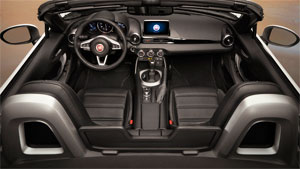 Steering is numb feeling, but accurate; and there’s always the possibility of snapping the rear loose; as even with the cushier feel, the car remains plenty responsive.
Steering is numb feeling, but accurate; and there’s always the possibility of snapping the rear loose; as even with the cushier feel, the car remains plenty responsive.
But while unique outside and under the hood, the interior is another story. It’s almost a direct MX-5 copy, including dash-top infotainment screen that responds to touch and a console-mounted controller. To get navigation, you have to opt for Lusso trim and then add the Premium Collection Package.
The 124’s gauges look great and steering wheel placement is just about perfect.
Also there’s still no dash-mounted glove box, rather a storage bin in between the seats, but you do get an outside trunk release. And, with 5 1/2 inches more length, there’s more room in the 124’s trunk, 4.9 cubic-ft. versus the MX-5’s 4.6.
And we love the fact that top operation is still 1-hand fold down simple; thank you Fiat for not complicating that.
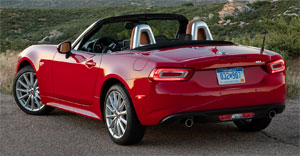 Government Fuel Economy Ratings are 25-City, 36-Highway, and 29–Combined. We averaged just 27.1 miles-per-gallon, and this tiny turbo does require Premium.
Government Fuel Economy Ratings are 25-City, 36-Highway, and 29–Combined. We averaged just 27.1 miles-per-gallon, and this tiny turbo does require Premium.
The Energy Impact Score is still good however, at 11.4-barrels of annual oil consumption with CO2 emissions of 5.0-tons.
There are 3-models of 124 to choose from, starting with Classica at $25,990. For what it’s worth, that makes it the lowest-priced turbocharged convertible in America, but also $240 more than a base MX-5.
So overall, if you like the MX-5, you’ll like the 124. Though, while clearly not politically correct, we do think the 2017 Fiat 124 Spider will easily appeal more to female buyers; though it will certainly attract fans of the original 124 as well.
Mazda says that without the Fiat partnership for the 124, a new MX-5 might not have happened. Now that would have been a calamity. So, we’re ecstatic that Fiat decided to bring back the 124 Spider, for a global tie-up that everyone who loves to drive should go out and celebrate.
Specifications
- Engine: 1.4 liter
- Horsepower: 160
- Torque: 184 lb-ft.
- 0-60 mph: 7.6 seconds
- 1/4 mile: 15.8 seconds @ 91 mph
- EPA: 25 mpg city / 36 mpg highway
- Energy Impact: 11.4 barrels of oil/yr
- CO2 Emissions: 5.0 tons/yr
2025 Genesis G80
New Interior And New Tech Elevates G80 Sedan
Talk about bad timing. This second-generation G80 debuted at the height of a global pandemic. But that hasn’t stopped Genesis or this Bentley-on-a-budget sedan. In fact, since then, Genesis has unveiled a spectacular all-electric version and now given all G80s a makeover. So, let’s find out what a better and better-timed new G80 is ready to deliver.
Breaking into the luxury sedan scene requires going up against traditional brands with long pedigrees and legions of loyal buyers. But Hyundai has never shied away from a challenge, and has made steady progress with their Genesis brand, and hopes that a revised 2025 G80 midsize sedan will be their next step up.
Styling matters more when you’re the upstart, and the Genesis Athletic Elegance theme changes very little for ’25; just a new grille, slightly reshaped bumpers, new wheels ranging from 18 to 20 inches, and an updated color palette. The G80’s unique two-line LED headlamps get revised Micro Lens Array technology that boosts performance while minimizing the brightness for oncoming drivers.
Changes inside are much more significant with an entirely new dash and console, eliminating both the hooded gauge panel and dashtop wide info screen. Merging them together into one 27-inch wide LG panoramic display than runs from behind the steering wheel to over the center stack. There’s a bigger and more comprehensive control panel in the center stack; while the console gets less armrest coverage, more space for storage, and reshaped cupholders. The wider display is still a touchscreen, but there is also a console mounted controller if you prefer to keep it fingerprint free. Both options work well, but the controller is still too easy to confuse with the dial-like shifter.
Materials are on par if not a notch above most European luxury rivals, and there are 18 speakers to crank out 1,400 watts of premium sound from Bang & Olufsen. Top Sport Prestige trim comes with Nappa leather seats, carbon fiber trim, micro-suede materials for the headliner and pillar covers, heated armrests, head-up display, and upgraded active safety features. Front seats are immensely comfortable without feeling overly soft, and there’s plenty of comfort and room for adults in the back seat.
More Bentley than Benz; streaking down the track with European-style solidity that gives you very little indication of the high speed you’re traveling at.
Same powertrains as last year. Base power comes from a 300-horsepower 2.5-liter turbo-four; the upgrade is this 3.5-liter twin-turbo V6 that outputs 375 horsepower and 391 lb-ft of torque. Both are hitched to standard all-wheel drive. At our Mason Dixon Dragway test track, the AWD delivered enough grip for consistent slip-free launches. We hit 60 in 5.0 seconds flat. Run after run, the 3.5T pulled as strong as it sounds. All G80s work with the same paddle-shift eight-speed automatic transmission, and while shifting was silky smooth on the street, here on the track with Sport Mode and wide-open throttle they were noticeably firmer and quicker.
It was a very surreal experience in the cabin. More Bentley than Benz; streaking down the track with European-style solidity that gives you very little indication of the high speed you’re traveling at. For us, that was 105 mph in 13.4 seconds at the quarter. In addition to the G80’s Sport Mode that tightens steering, improves throttle response, adjusts shifting points, firms up the suspension, and reconfigures stability system parameters; Sport Prestige trim adds rear-wheel steering and an electronic limited slip differential. But, even with all of that, it didn’t feel overly sporty in our handling course. Now, we were able to comfortably carry quite a bit of speed through the cones, but there was just an overall soft, somewhat disconnected and heavy presence that had us unsure of how hard we could push. Sport Prestige also adds upgraded performance brakes. They were plenty capable, bringing this 4,600-lbs. luxury liner consistently down from 60 in just 104 feet with little fade.
Government Fuel Economy Ratings for the six-cylinder are 16 City, 24 Highway, and 19 Combined. We averaged a good 21.3 mpg of Premium. Still, that’s a slightly below average Energy Impact Score, using 15.7 barrels of oil annually with 7.8 tons of CO2 emissions.
Considering the amount of luxury packed into the G80, its $58,350 starting price, even though slightly higher than last year, remains pretty remarkable. It’s a substantial step up to the 3.5T though, as it begins at $70,850.
Genesis has existed as a standalone luxury brand for just less than a decade, and it has indeed been making steady progress into what is surely the hardest segment of all to master. The 2025 Genesis G80 sedan continues to impress and is a great option for luxury-minded buyers who prioritize true value over badges.
Specifications
As Tested
- Engine: 3.5-liter twin-turbo V6
- Transmission: eight-speed automatic
- Horsepower: 375
- Torque: 391 lb-ft
- EPA: 16 City | 24 Highway | 19 Combined
- 0-60 mph: 5.0 seconds
- 1/4 Mile: 13.4 seconds at 105 mph
- Braking, 60-0 (avg.): 104 feet
- MW Fuel Economy: 21.3 mpg (Premium)
2024 Fiat 500e
Fiat’s Electric Car Is Also Fiat’s Only Car
EVs are coming in all shapes and sizes these days, but few have a more recognizable shape than this pint-sized Fiat 500e. After all, it first arrived on our shores more than a decade ago. Well, much has changed since then, and there’s an all-new, second-gen 500e now hitting the streets. So, let’s see if it can keep the Fiat brand relevant here in the U.S.
Fiat returned to the U.S. for 2012 with the cute and subcompact 500. Their lineup quickly expanded with several 500-based models, including the all-electric 500e. They even launched a Mazda Miata-based roadster, the 124 Spider. Who would have thought that 12 years on, the only one left would be that 500e? For 2024, it kicks off its 2nd generation here.
At least they left us with not just any 500e, but a La Prima 500e. According to Fiat, it is “Inspired by Beauty,” as one of four trims initially available. There’s also Inspired by Music, Inspired by Los Angeles, and (RED), in parentheses, representing Fiat’s commitment to helping fight global health emergencies. A Giorgio Armani Collector’s Edition is due in 2025.
Our Inspired by Beauty 500e came painted in Rose Gold, which we have to admit may not be beautiful to everyone. But, have no fear, there are plenty of other colors available, one of which we will be adding soon to our long-term test fleet. We actually love most everything else about the exterior of this charming character, boldly showcasing its Italian flair while bringing iconic 500e style and classic proportions to the electrified era.
And it’s quite fun to drive too. Not exactly on the MINI Cooper level, but it certainly has some of that go-kart vibe, with lots of weight down low in its wide and short platform along with quick steering that has you wanting to dart in and around traffic. There’s no lack of safety and convenience features packed into this tiny package. Automatic Emergency Braking and Lane Keep Assist are standard, and inside you’ll find plenty of charge ports and even wireless device charging and integration. There’s also some fine stitch work and subtle reminders of its provenance. Front seats are plenty spacious for even large adults. The rear seats? Well, except for little ones, you’d best just fold them down for added cargo room and think of this as a two-seater hatchback.
Light steering and minimal understeer had us zipping in and out of cones with ease, with the kind of playfulness and toss-ability you can only get in a small car.
The 500e’s single 87-kW motor powers its front wheels to the tune of 117 horsepower and 162 lb-ft of torque. A 42-kWh battery charges at a max rate of 85 kW, getting you to 80% in 35 minutes on DC fast charging; but charging to 100% on Level 2 only takes 6 hours, so you can easily charge it overnight at home. The 500e’s maximum driving range is rated at 149 miles, but with all-season tires it drops to 141. Not to worry, as we were on pace for 174 miles in our driving loop. And using just 29 kWh of electricity per 100 miles, the 500e is quite efficient.
It’s not fast by EV standards, but quicker than most combustion engine subcompacts, even spinning up the tires quite a bit at our Mason Dixon test track. We got to 60 in a pretty quick 7.9 seconds; but that was also where things started to taper off. Speedometer numbers were definitely building less quickly towards the end of the quarter-mile, but for a tiny car it felt plenty smooth and stable down the track. We finished the quarter-mile in 16.2 seconds at 84 mph. There are three drive modes including “Range,” where regenerative braking allows for smooth one-pedal driving.
The 500e felt even better in our handling course, light steering and minimal understeer had us zipping in and out of cones with ease, with the kind of playfulness and toss-ability you can only get in a small car. We found we could push incredibly hard before there was any intervention from stability systems. The only things less than perfect were a touch too much body roll, and the lack of bolstering in the seats to keep us from sliding around. Coming in just under 3,000 lbs., the 500e weighs less than many ICE cars on the road. And that was evident in our braking test, where distance averaged a short 99 feet; stops were straight, fade free, and with very little nosedive.
Perhaps the most gorgeous thing of all about this new 500e is its price tag before incentives, starting with the (RED) at $34,095; from there, Inspired by Beauty, Music, and Los Angeles all have unique features, and all sticker for $37,595. That’s an inviting on-ramp to the EV lifestyle highway, especially if you can catch a cheap lease, though with the limited amount of driving range we wouldn’t stay on there for too long.
But that just means the Fiat 500e is perfectly suited for city dwellers, short distance commuters, and anyone looking for a second car for daily errands that quickly “fills-up” at home every night. Everyone should make room for a little Italian flair in their life, and that’s the Fiat 500e– equal parts charming, quirky, and fun.
Specifications
As Tested
- Motor Setup: Single 87-kW Motor
- Battery Size: 42-kWh
- Horsepower: 117
- Torque: 162 lb-ft
- EPA Range: up to 149 miles
- 0-60 mph: 7.9 seconds
- 1/4 Mile: 16.2 seconds at 84 mph
- Braking, 60-0 (avg.): 99 feet
- MW Test Loop: ~ 174 miles
- Efficiency: 29 kWh / 100 miles







